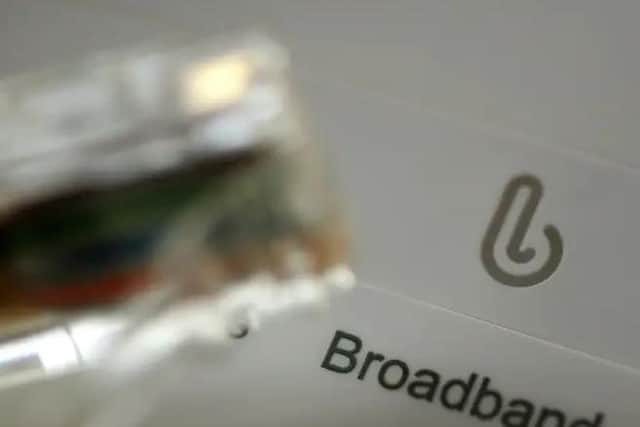Lack of fast broadband access in Hertfordshire is 'a real eye-opener'
and live on Freeview channel 276
The relatively low access to faster broadband across Hertfordshire has been highlighted at a meeting of the Hertfordshire Growth Board.
More and more people are being forced to rely on virtual links for business – and leisure. And access to faster broadband connections has never been more important.
Advertisement
Hide AdAdvertisement
Hide AdBut at a meeting of the growth board on Tuesday, March 30, chief executive of the Local Enterprise Partnership Neil Hayes revealed that availability of faster ‘fibre to the premises’ broadband (FTTP) in the county was relatively poor.


He said that only eight per cent of premises were able to access FTTP connections, which connect directly to the premises rather than to a nearby cabinet.
That’s half as many as in neighbouring Essex where the FTTP rate is 16.1 per cent. And it’s 10 per cent lower than the national average, of 18 per cent.
And further data presented to the board on access to ‘hyperfast’ gigabit broadband – capable of 1000MB speeds – pointed to a wider disparity.
Advertisement
Hide AdAdvertisement
Hide AdMr Hayes likened the future roll-out of ‘next generation’ gigabit broadband to the switch from analogue to digital.
But he said just eight per cent of premises in Hertfordshire were able to access connections that were gigabit capable – compared to 21.5 per cent in Essex and almost 18 per cent in Buckinghamshire.
At the meeting Mr Hayes outlined work by the growth board – and broadband providers – to look at the broadband market. And work will now continue on a digital strategy for the county.
Conservative county council leader Cllr David Williams said the lack of gigabit capacity in the county was “a real eye-opener”.
Advertisement
Hide AdAdvertisement
Hide AdAnd Cllr Sharon Taylor, Labour leader of Stevenage Borough Council, suggested this should be ‘a top priority”.
She noted that the county’s main economic clusters – of creative industries and cell and gene therapy – rely very heavily on high quality digital infrastructure.
And she also pointed to the digital needs of flexible working spaces in town centres.
“I think we have to have an absolute laser like focus on this,” said Cllr Taylor. “Otherwise we will lose ground to those other areas that have got the higher infrastructure.”
Advertisement
Hide AdAdvertisement
Hide AdMeanwhile Liberal Democrat leader of St Albans District Council Cllr Chris White said: “I found the presentation quite chilling actually – and I think we need to be really quite scared about the nature of the competition from elsewhere – which is not necessarily the traditional places.”
He pointed to Herefordshire as a county that had had 100 per cent superfast broadband 10 years ago.
And referring to a street in St Albans, he said there were still weaknesses in town centre areas in Hertfordshire.
Despite the limited access to FTTP broadband, Mr Hayes told the board that demand for ‘superfast’ broadband was higher in Hertfordshire than anywhere else in the UK.
Advertisement
Hide AdAdvertisement
Hide AdMost ‘superfast’ broadband connections are delivered by part-fibre part-copper ‘fibre to the cabinet’ (FTTC) technology and have download speeds in excess of 30 megabits per second (30Mbps).
Whereas with fibre-to-the-premises (FTTP) connections, the fibre optic cable runs from the exchange to the premises and can provide download and upload speeds in excess of 1000 Mbps.